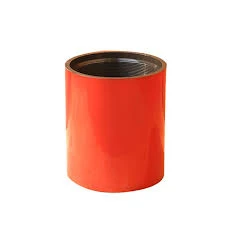- Afrikaans
- Albanian
- Amharic
- Arabic
- Armenian
- Azerbaijani
- Basque
- Belarusian
- Bengali
- Bosnian
- Bulgarian
- Catalan
- Cebuano
- Corsican
- Croatian
- Czech
- Danish
- Dutch
- English
- Esperanto
- Estonian
- Finnish
- French
- Frisian
- Galician
- Georgian
- German
- Greek
- Gujarati
- Haitian Creole
- hausa
- hawaiian
- Hebrew
- Hindi
- Miao
- Hungarian
- Icelandic
- igbo
- Indonesian
- irish
- Italian
- Japanese
- Javanese
- Kannada
- kazakh
- Khmer
- Rwandese
- Korean
- Kurdish
- Kyrgyz
- Lao
- Latin
- Latvian
- Lithuanian
- Luxembourgish
- Macedonian
- Malgashi
- Malay
- Malayalam
- Maltese
- Maori
- Marathi
- Mongolian
- Myanmar
- Nepali
- Norwegian
- Norwegian
- Occitan
- Pashto
- Persian
- Polish
- Portuguese
- Punjabi
- Romanian
- Russian
- Samoan
- Scottish Gaelic
- Serbian
- Sesotho
- Shona
- Sindhi
- Sinhala
- Slovak
- Slovenian
- Somali
- Spanish
- Sundanese
- Swahili
- Swedish
- Tagalog
- Tajik
- Tamil
- Tatar
- Telugu
- Thai
- Turkish
- Turkmen
- Ukrainian
- Urdu
- Uighur
- Uzbek
- Vietnamese
- Welsh
- Bantu
- Yiddish
- Yoruba
- Zulu
well tubing and casing
Understanding Well Tubing and Casing Essential Components in Drilling Operations
Well tubing and casing are vital components in the oil and gas industry, playing crucial roles in the drilling and production processes. Understanding these elements is essential for ensuring the sustainability, efficiency, and safety of subsurface operations. This article delves into what well tubing and casing are, their functions, and their significance in the drilling process.
What is Casing?
Casing refers to the series of steel pipes that are installed in the bored well to provide structural integrity and stability. Once a well has been drilled, casing serves multiple purposes. Primarily, it prevents the collapse of the borehole walls, thus protecting the well from contamination by surface fluids. Additionally, casing separates different underground layers, ensuring that water aquifers are not contaminated by oil or gas seepage.
Casing is typically installed in stages, with larger diameters at the surface and progressively smaller diameters as the well depth increases. Different types of casing, including surface casing, intermediate casing, and production casing, are used depending on the needs of the well and the geological conditions encountered. Surface casing is designed to protect fresh water zones, while production casing allows for the extraction of oil and gas.
What is Tubing?
Tubing is the smaller diameter pipe installed inside the well casing to transport oil, gas, or other fluids to the surface. It is often made from high-strength materials engineered to withstand harsh conditions and high pressures found in underground environments. Tubing plays a crucial role in the production phase of the well, facilitating the efficient flow of resources to the surface.
Once the production casing has been installed and cemented, the tubing is inserted, and the well is then equipped with various production equipment, such as pumps and separators. The tubing system is designed for easy removal and replacement, allowing for maintenance or adjustments without needing to re-drill the well.
well tubing and casing

The Importance of Casing and Tubing
Both casing and tubing are critical for the safety and efficiency of oil and gas production. Without casing, a well would be prone to cave-ins, leading to operational failures and potential environmental hazards. Casing also serves as a barrier to prevent contaminants from entering the groundwater supply.
On the other hand, tubing is crucial for the actual transport of the hydrocarbons. Proper tubing design ensures that production rates are maximized while minimizing pressure loss. Additionally, tubing can help manage the effects of temperature variations and corrosion, which are significant factors in well longevity.
Challenges and Innovations in Well Tubing and Casing
While casing and tubing technologies have advanced, challenges still exist. The primary concern remains ensuring the integrity of these components in increasingly challenging environments, including high-pressure and high-temperature formations. Furthermore, corrosion from well fluids can lead to failures, making it necessary to use corrosion-resistant materials.
Innovations in material science have led to the development of advanced alloys and coatings that enhance the durability of casing and tubing. Additionally, the advent of monitoring technologies allows operators to track the condition of these components in real-time, enabling proactive maintenance and reducing the risk of failure.
Conclusion
Well tubing and casing are indispensable components of drilling and production operations in the oil and gas industry. By providing structural support, preventing contamination, and facilitating the efficient extraction of hydrocarbons, they ensure the safe and effective extraction of valuable resources. As exploration continues in more challenging environments, ongoing research and development in casing and tubing technologies will play a pivotal role in the future of drilling operations, ensuring not only productivity but also environmental protection and sustainability. Understanding the intricacies of these components is essential for anyone involved in the oil and gas sector, from engineers to environmental regulators.
-
Tubing Pup Joints: Essential Components for Oil and Gas OperationsNewsJul.10,2025
-
Pup Joints: Essential Components for Reliable Drilling OperationsNewsJul.10,2025
-
Pipe Couplings: Connecting Your World EfficientlyNewsJul.10,2025
-
Mastering Oilfield Operations with Quality Tubing and CasingNewsJul.10,2025
-
High-Quality Casing Couplings for Every NeedNewsJul.10,2025
-
Boost Your Drilling Efficiency with Premium Crossover Tools & Seating NipplesNewsJul.10,2025







